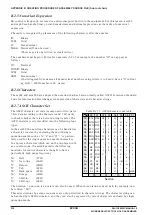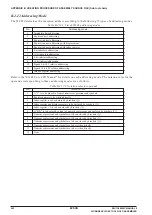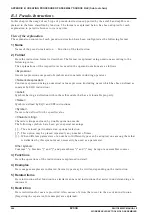
APPENDIX B CREATING PROCEDURE OF ASSEMBLY SOURCE FILE (Sub tool chain)
236
EPSON
S5U1C88000C MANUAL II
WORKBENCH/DEV TOOLS/OLD ASSEMBLER
B.2 General Format of Source File
Assembly source file is composed of statements (lines) such as the CPU instruction set, pseudo-instruc-
tions which are incorporated in the sap88 and asm88, and comments, and is completed by END pseudo-
instruction (pseudo-instruction to terminate assembly). (Statements can be described after the END
pseudo-instruction, however, that part will not be assembled.)
The following explains the asm88 fundamentally. (Functions permitted on the asm88 will not cause an
error on the sap88.)
Example of source file
subtitle
"assembly source file example (sample.s)"
public
main
external
src_address, dst_address, counter
;
code
main:
ld
ix,[src_address]
ld
iy,[dst_address]
ld
hl,[counter]
ret
;***
end
The following explains the general particulars such as the composition of the statement and characters
and notation for numerical values which can be used.
Each source program statement should be written using the following format.
Symbol field
Mnemonic field
Operand field
Comment field
Example:
on
equ
1000h
start:
jrl
init
;to initialize
flag:
db
[1]
value:
db
080h
In the above sort of format line, the line end normally is the termination, however, the operand may be
described over several lines.
Symbol field:
In this field, describe a symbol. A colon (:) must be used following the symbol except for
the statement of the EQU or SET instruction.
Use symbols properly in accordance with the following definition.
Symbol
•Label
(Colon must follow)
•Name (Constant definition by EQU or SET instruction)
Mnemonic field:
In this field, describe an operation code or a pseudo-instruction.
Operand field:
In this field, describe an operand or constant of each instruction, a variable, a defined
symbol, a symbol that indicates memory address, or an operational expression.
Comment field:
Put semicolon (;) at the beginning of this field, and describe a comment following it.






























